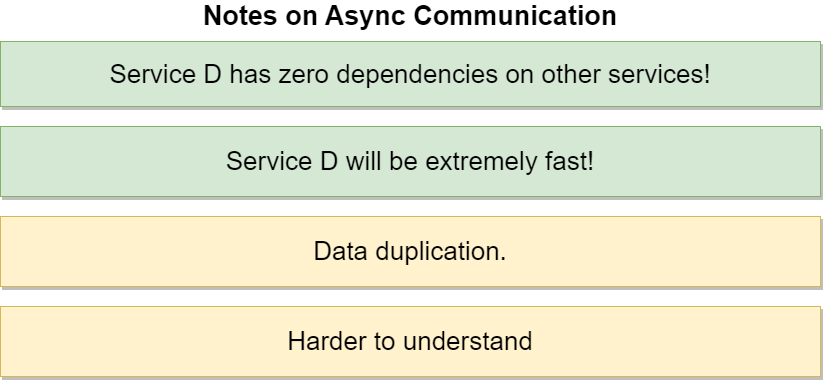What is a Microservice?
A monolithic architecture looks similar like this:
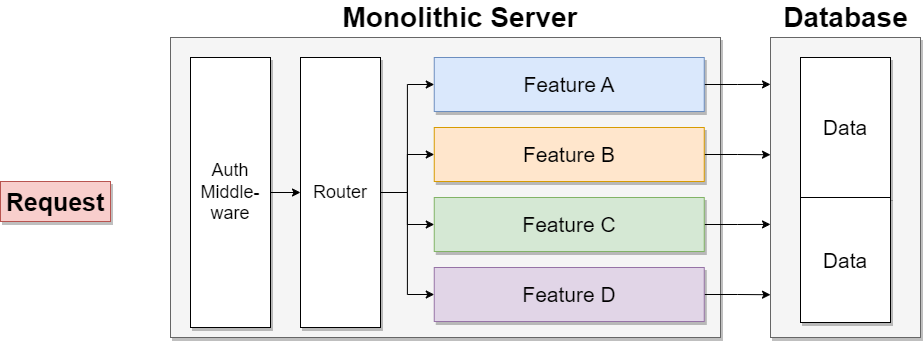
A Monolith normally contains following functions to implement all features of our app:
- Routing
- Middlewares
- Business Logic
- Database access
In contrast a Microservice contains all these functions to implement one feature!
So a Microservice Architecture might look like this:
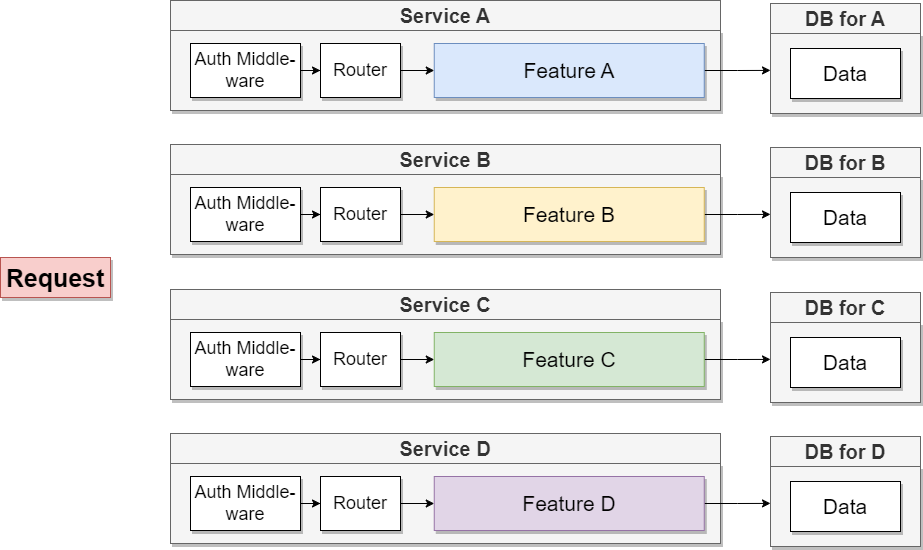
Every feature has is own personalized service and they are totally self-contained. So even if one features crashes, the other features are still working.
Data Management between services
The Data Management is THE big problem of microservices, because we want to produce self-contained services there exists some restrictions regarding database access.

Why Databse-Per-Service is necessary
- We want each service to run independently of other services
- Database schema/structure might change unexpectedly (if different teams work on different Microservices)
- Some services might function more efficiently with different types of DB’s (sql vs nosql)
Communication Strategy between Services
We use two different strategies to communicate between different Microservices.

Synchronous Communication
A possible example how synchronous communication may work in a mciroservice environement:
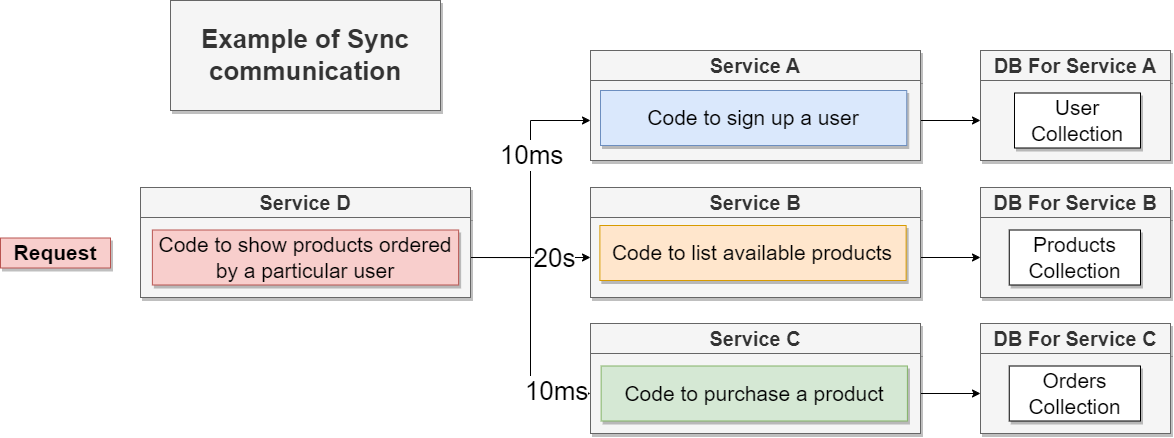
This leads to the following Pro’s and Con’s of Synchronous Communication:
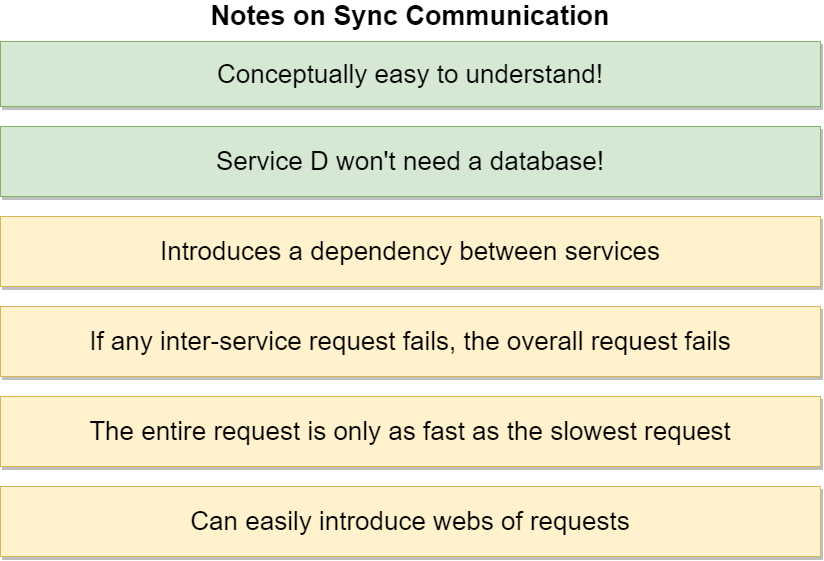
The more a Microservice needs to communicate to other Services the more complex the whole architecture might become:

Asynchronous Communication
There exists two different ways of asyncronous communcation.
First Way: Event-Based Communication
The event-based communication is not a good way for communication because it shares all the downsides of synchronous communcation and has additional downsides (like enhanced complexity).

Second Way: Event-Based Enhanced
First of all specify what exactly is necessary for each service to provide the functionality, for example:
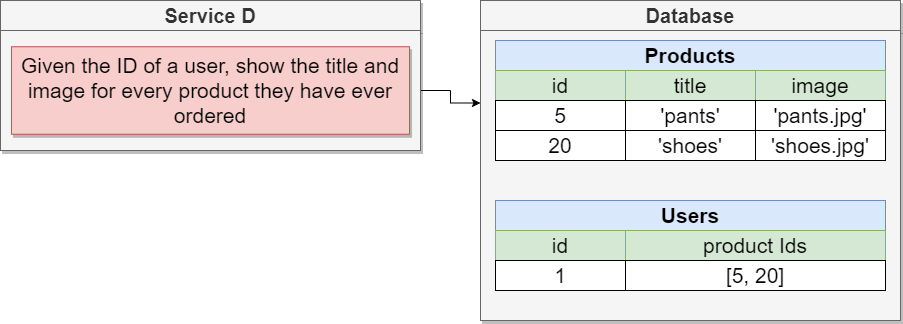
Then you can use the event-based communication to get changed data into your individual services:
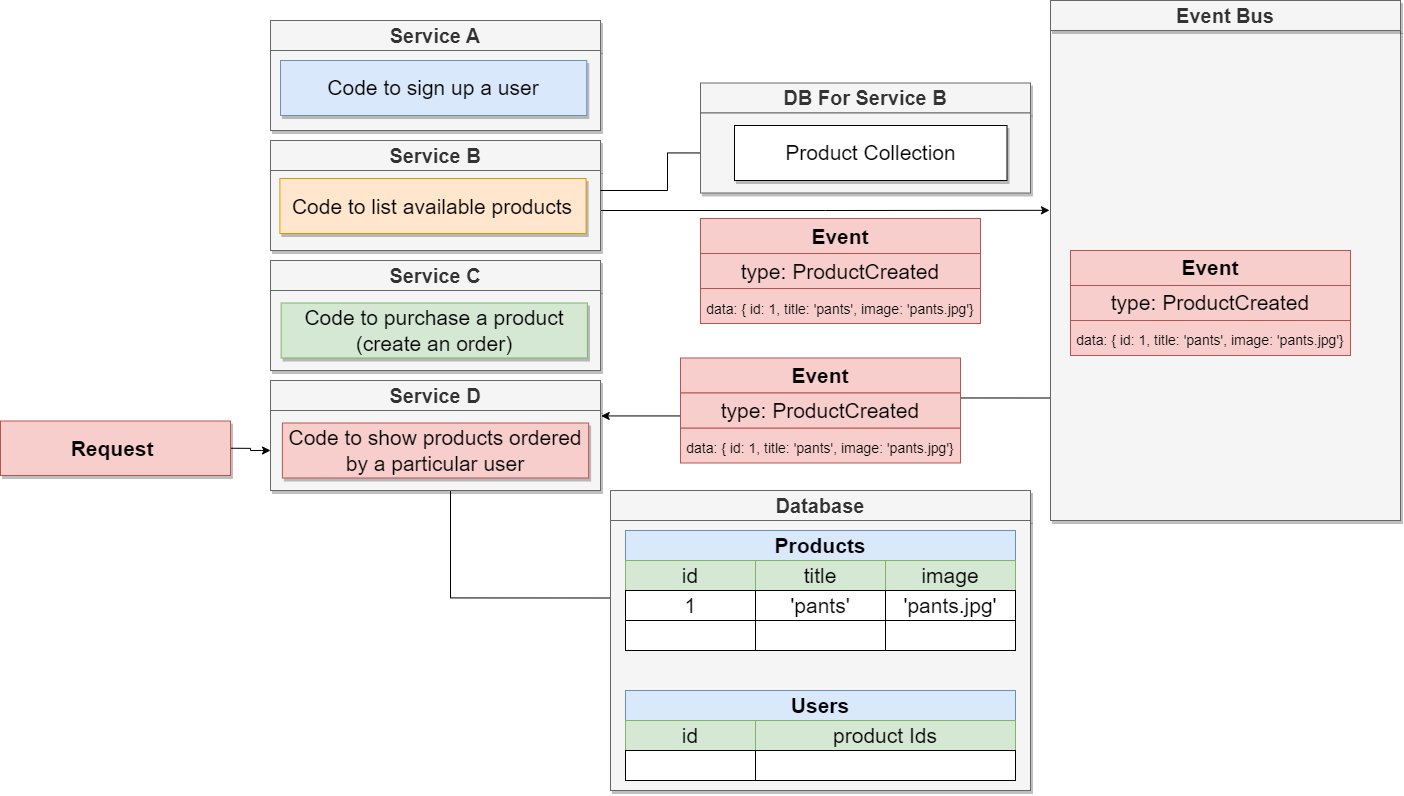


In this way you make sure, that Service D always has the right data to show the ordered products for each user without relying on other services during the execution of Service D.
